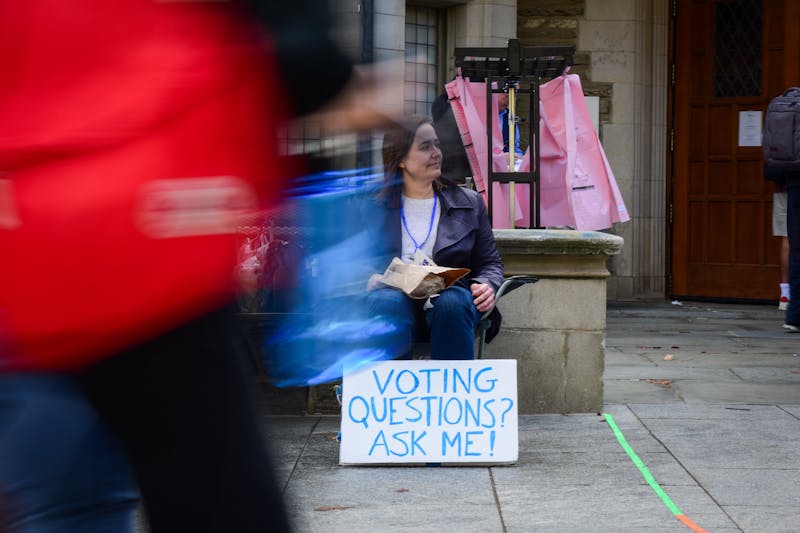From Michelle Weinberg's, "For Every Action," Fall '99 From Michelle Weinberg's, "For Every Action," Fall '99Every morning, the average student awakens to the sound of a buzzing alarm clock, flips on the lights, starts up their computer, stares blankly into the open refrigerator contemplating breakfast and turns on the television or radio without a second thought. Now, Penn is faced with a unique opportunity to reduce the amount of pollution its electrical usage causes. Pennsylvania has become one of only two states to deregulate the power industry, providing consumers with the option of purchasing power from an environmentally friendly supplier. Green energy, also referred to as "Green-E," refers to power that is at least half generated by renewable energy sources such as solar energy, hydroelectric power, the combustion of organic material. Green electricity suppliers also produce energy by capturing methane, a greenhouse gas, from landfills and using it as fuel in conventional power plants. Renewable energy sources are environmentally preferable because they create a negligible amount of air pollution, produce very little waste products and are far more sustainable in the long-term. In contrast, non-renewable methods of energy production -- such as coal and nuclear power --have a number of environmentally dangerous impacts. For example, 98 percent of the electricity produced by PECO Energy, currently the area's largest electricity supplier, is created through the burning of coal and by nuclear fission. Toxins released into the air from the burning of coal include sulfur dioxide and nitrogen dioxide, which contribute to acid rain and smog. Acid rain poses a threat to water ecosystems and smog is a contributing factor in asthma, emphysema and other lung problems. Additionally, mercury, a neurotoxin, and greenhouse gasses such as carbon dioxide are emitted by coal burning. Nuclear power plants do not contribute to air pollution but they do produce dangerous radioactive wastes. Since no safe disposal system for such waste currently exists, nuclear power plants create a long-term threat to humans and the environment. Given the choice between the two, it seems obvious which type of energy is a more responsible alternative. And these new, clean electricity options are extremely cost competitive. The reduction of environmental pollutants and the resulting health benefits surely outweigh the mere 1 percent difference between PECO Energy rates and those of one provider of 100 percent Green-E. Furthermore, what new electricity supplier wouldn't jump at the opportunity to strike a favorable deal to provide Green-E to a large, prominent institution such as the University of Pennsylvania? It would be terrific publicity for any company able to enter such a contract, as well as a huge boost to profits. Which leads me to the issue of marketing. Not only would the electricity supplier of choice benefit, but the University could incorporate their environmentally responsible actions into a positive marketing tool. I can imagine the advertising: "Penn lights up the 21st century with brighter students and clean electricity." And, since deregulation of the electric power industry has only occurred in two states, Pennsylvania and California, Penn has the opportunity to be the first university in the country to make the switch. Such an environmentally responsible act would be a great first for Penn. It is difficult to fathom what the University's electric bill must add up to each month. And it's even harder to understand that amount in terms of the pollution caused by electricity production. But it's easy to understand that certain types of energy production are environmentally safer than others. Now that we have the option to choose between electricity suppliers, it's time to make the easy, environmentally responsible choice.
The Daily Pennsylvanian is an independent, student-run newspaper. Please consider making a donation to support the coverage that shapes the University. Your generosity ensures a future of strong journalism at Penn.
DonatePlease note All comments are eligible for publication in The Daily Pennsylvanian.







